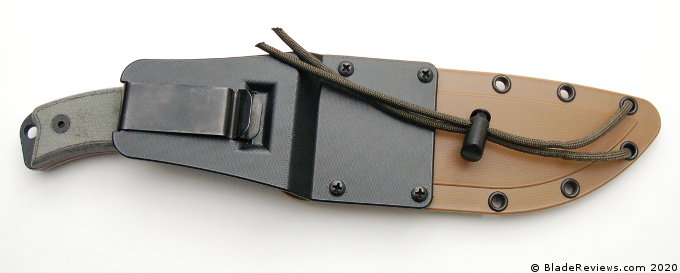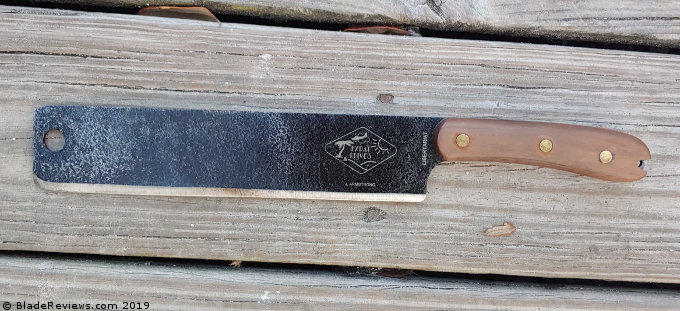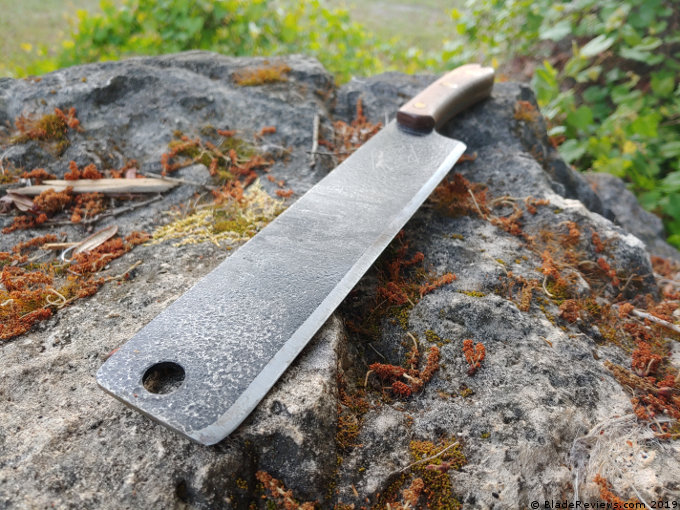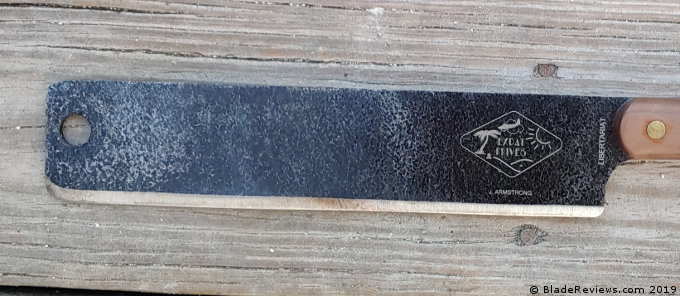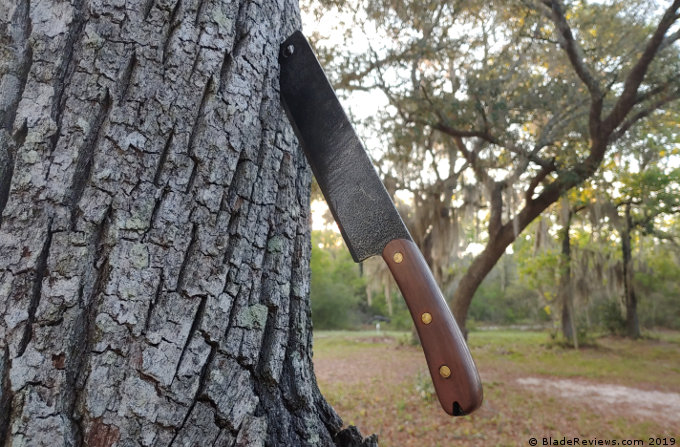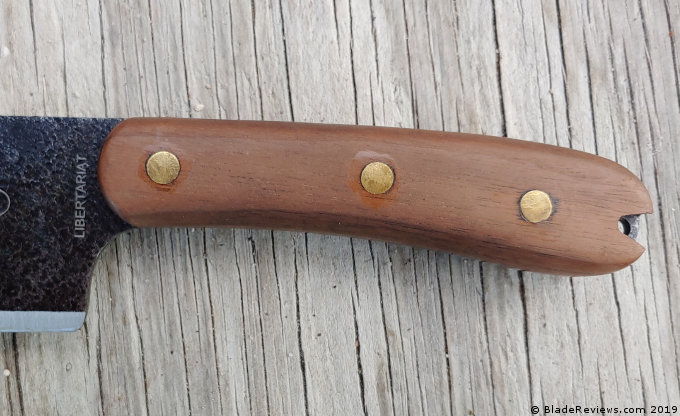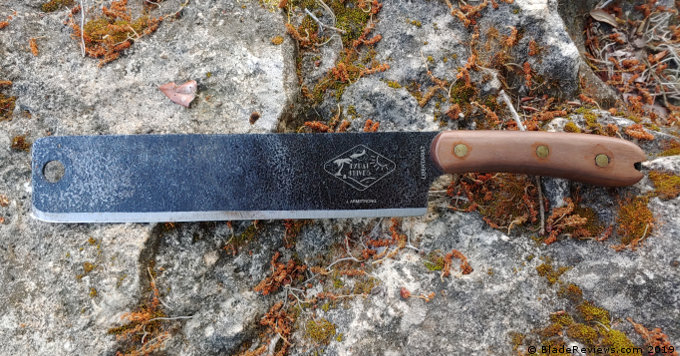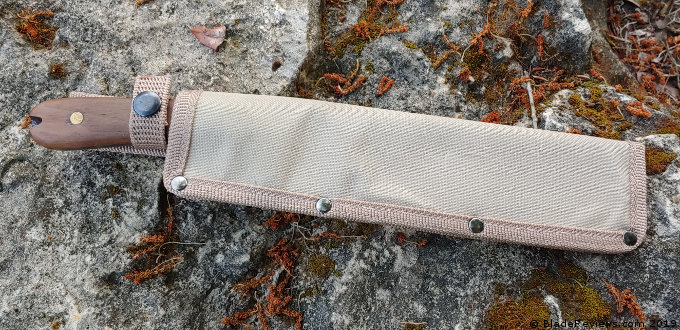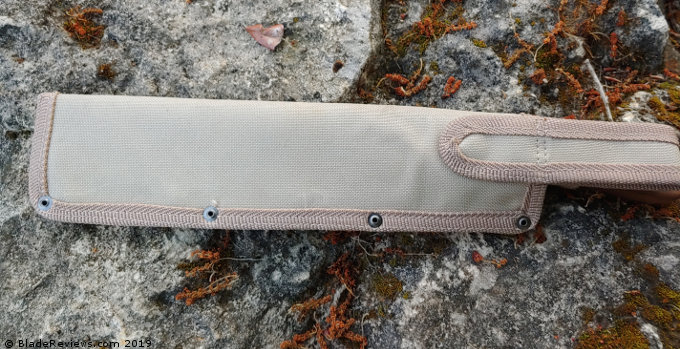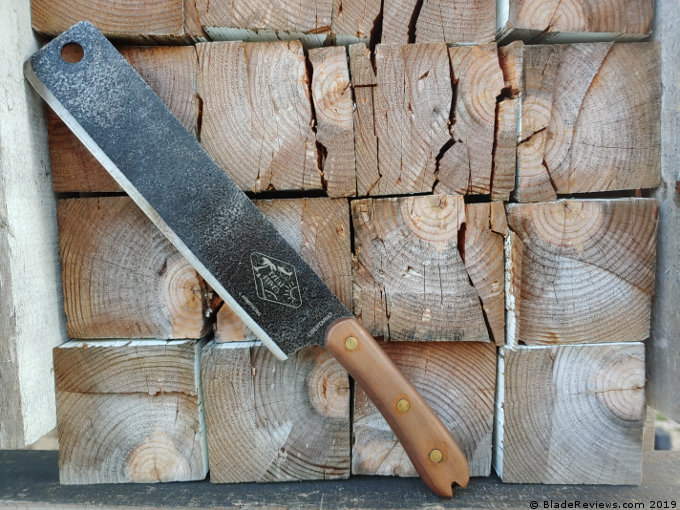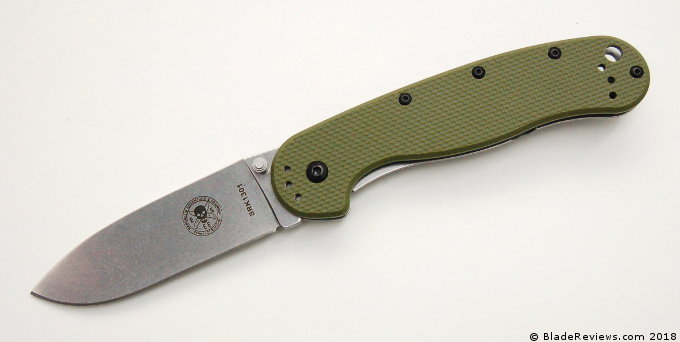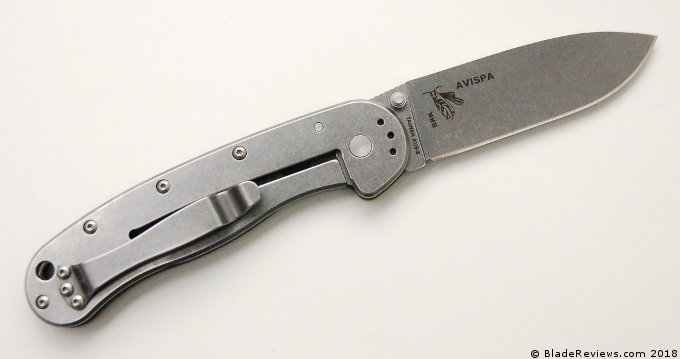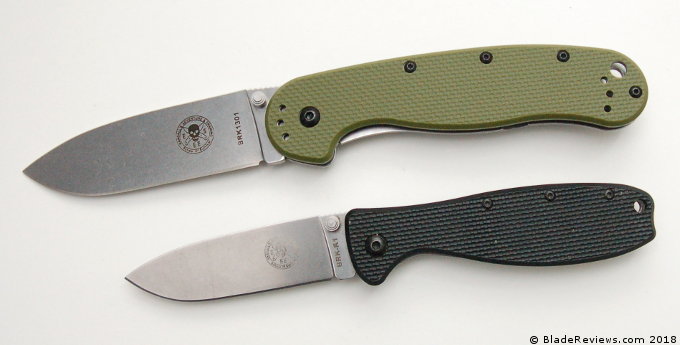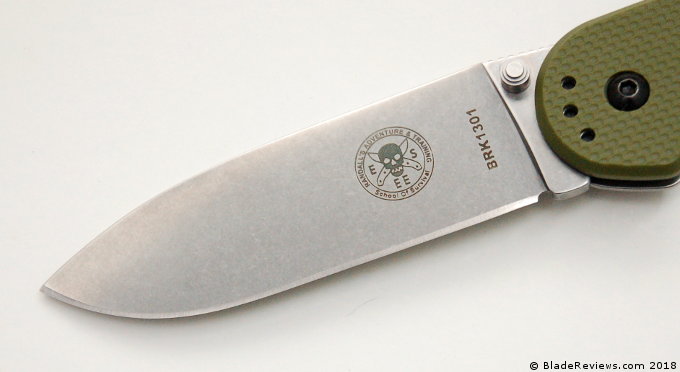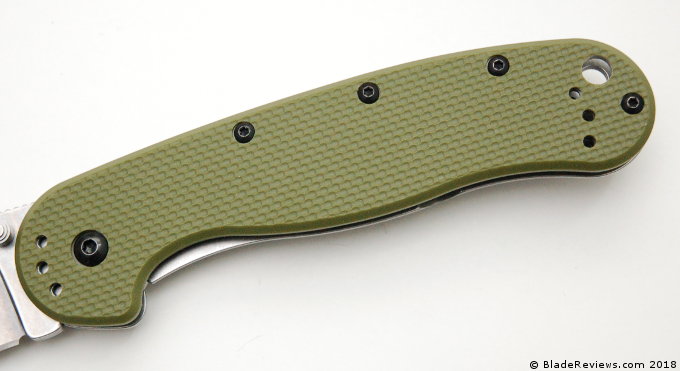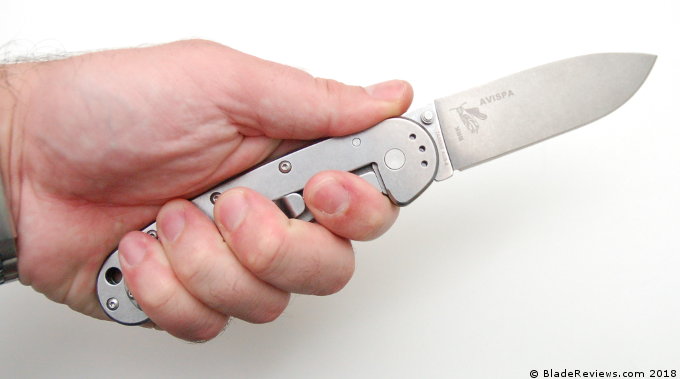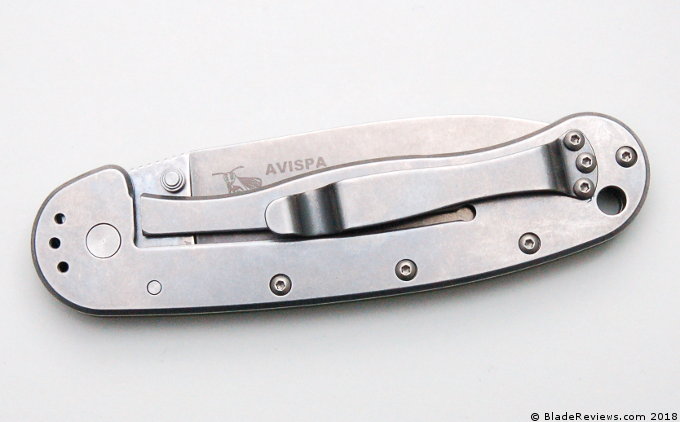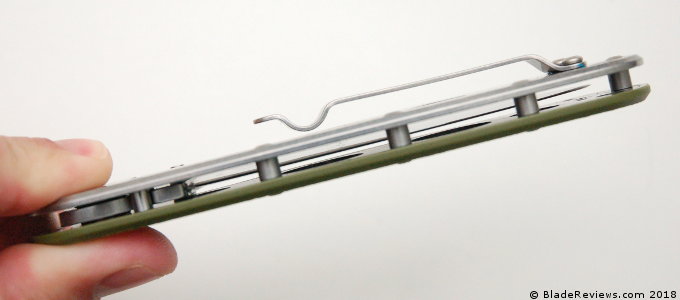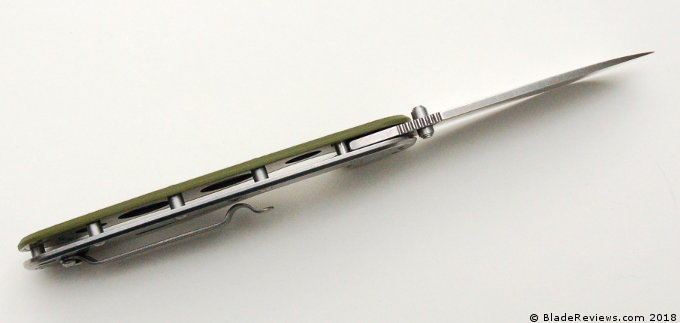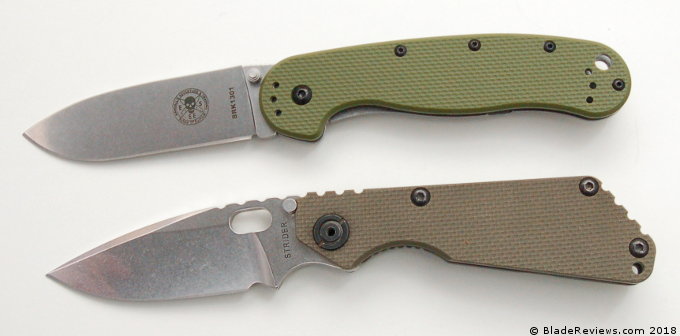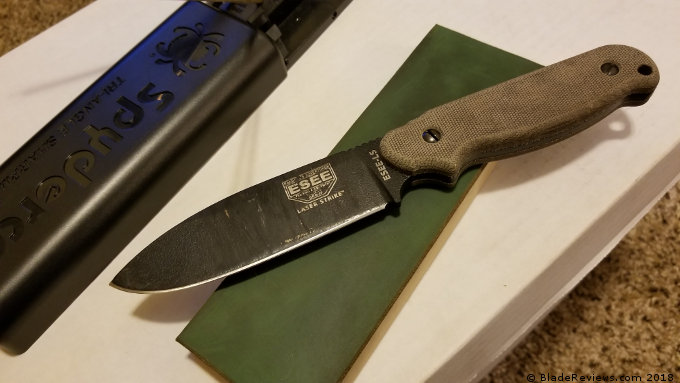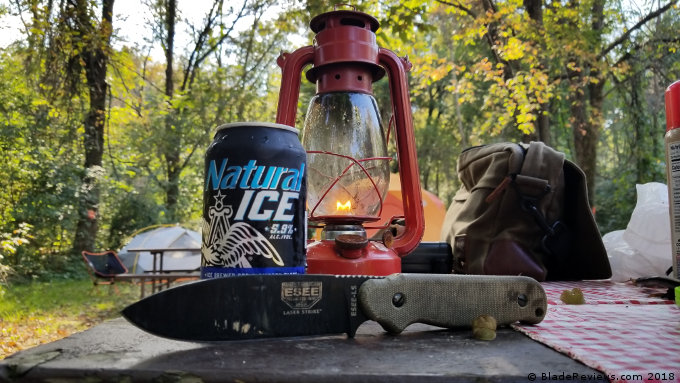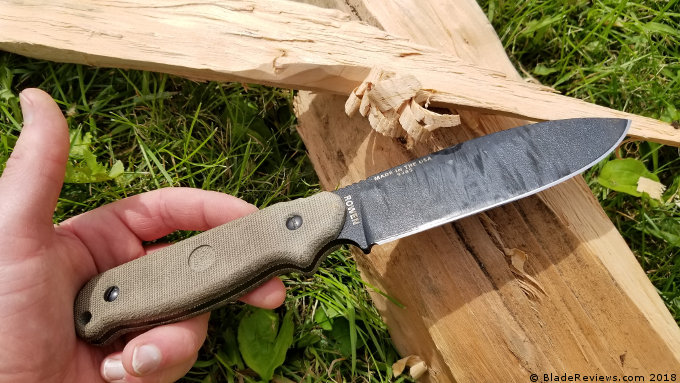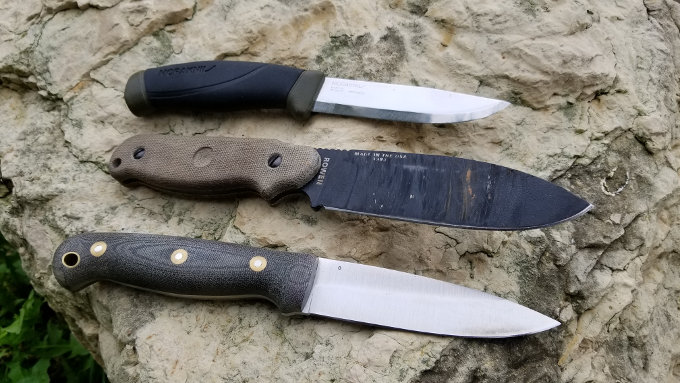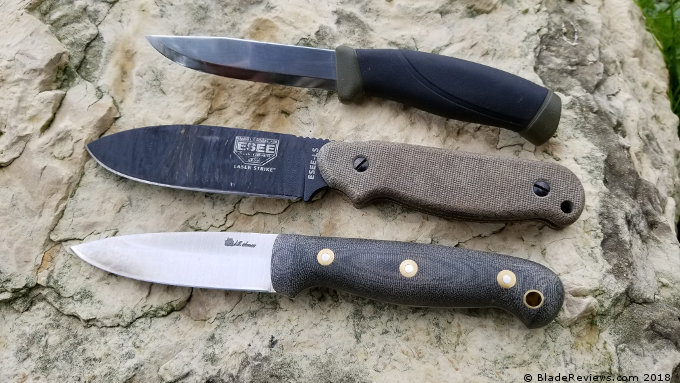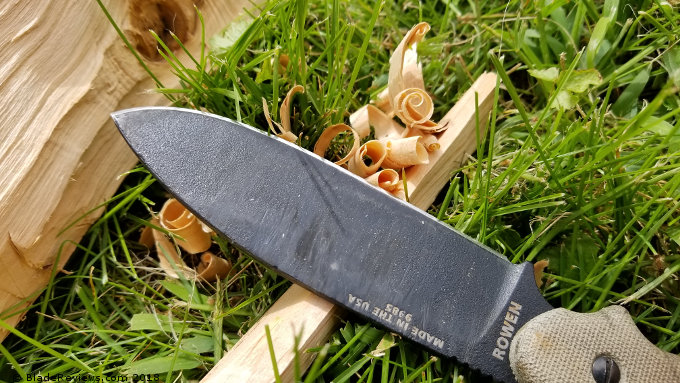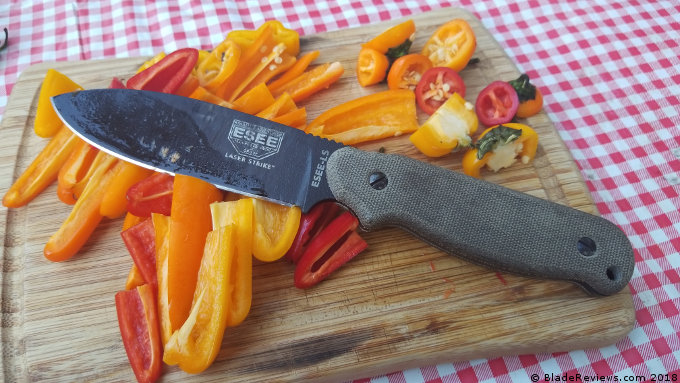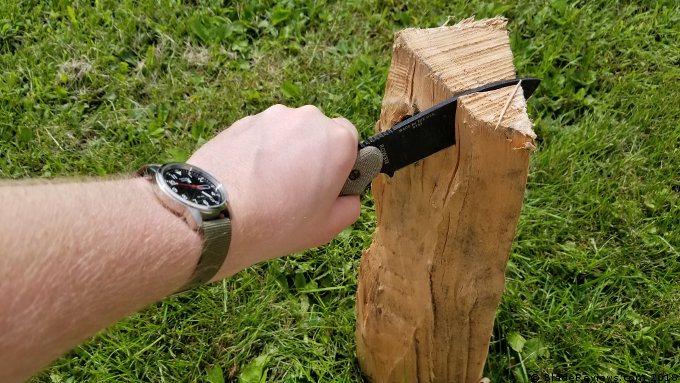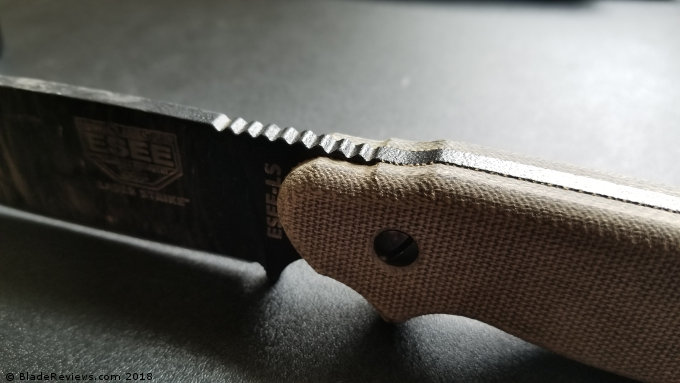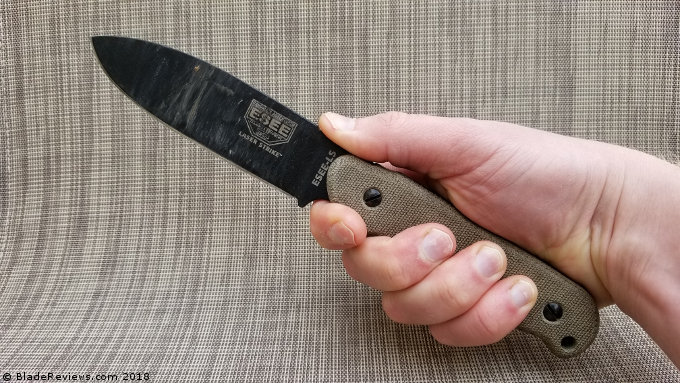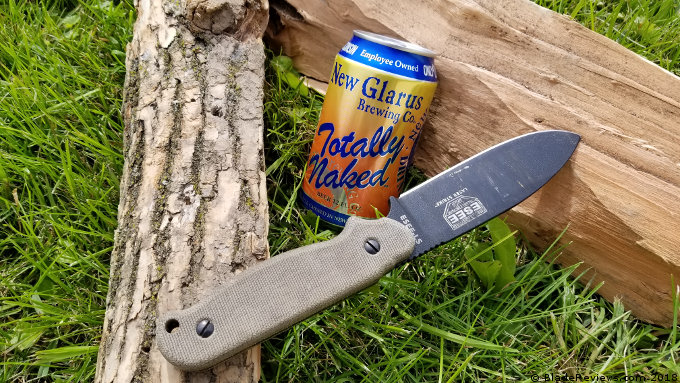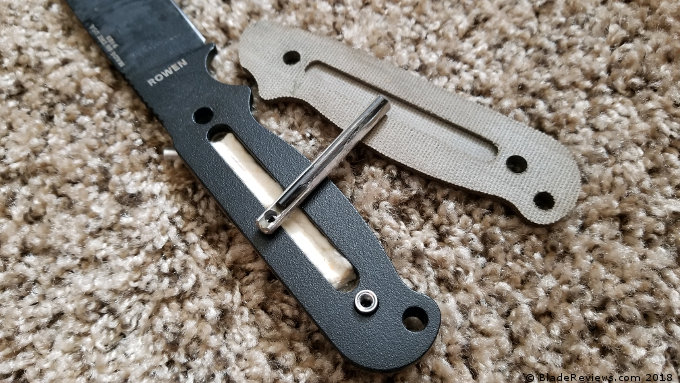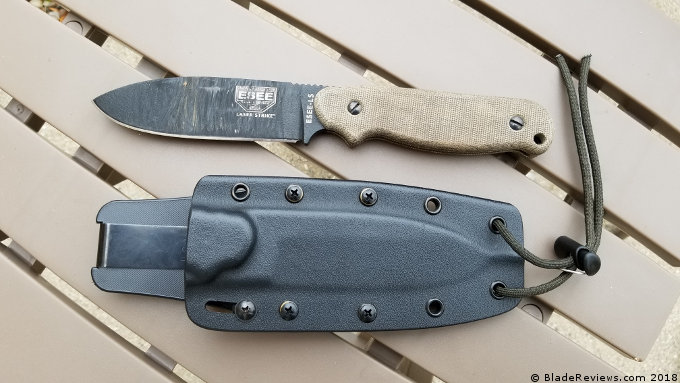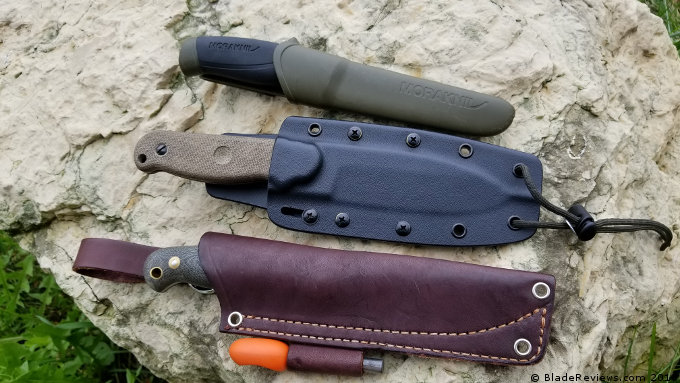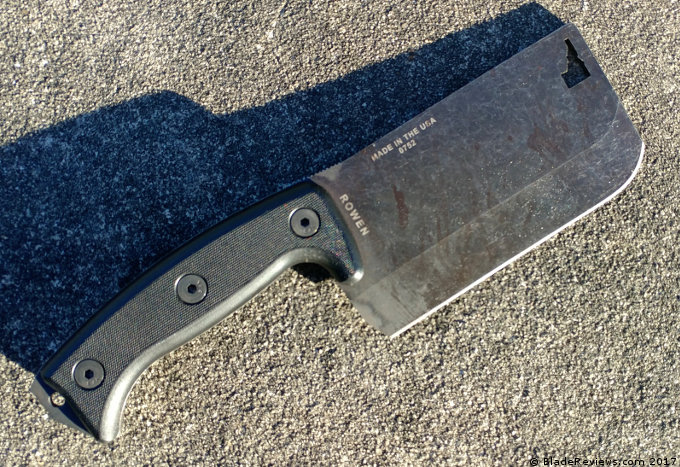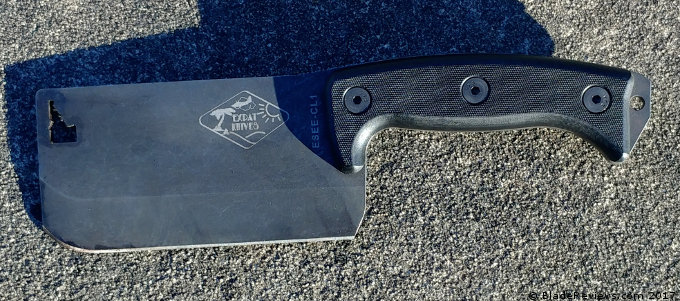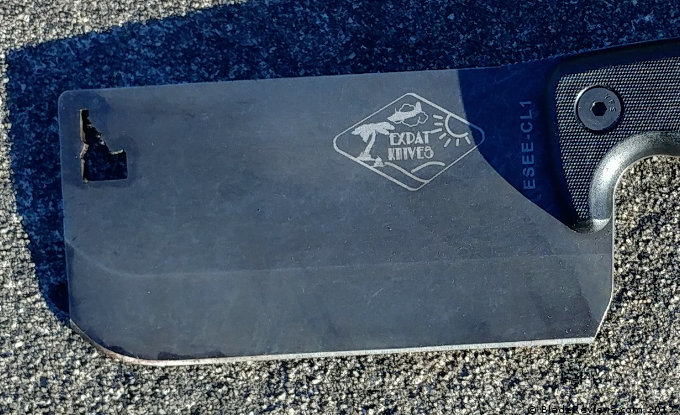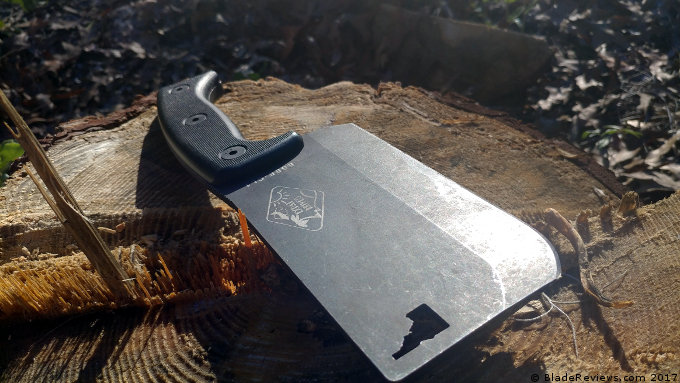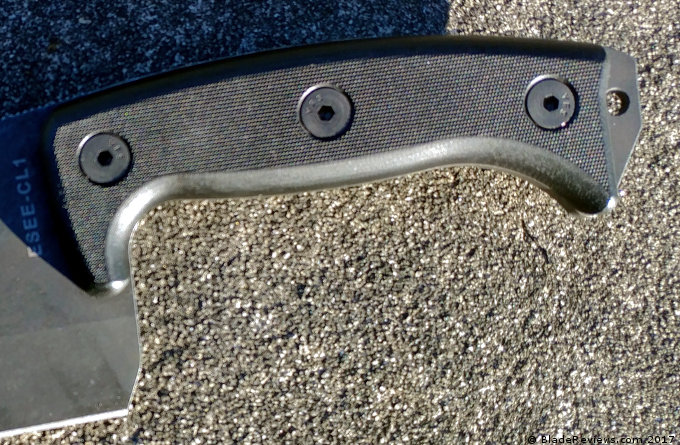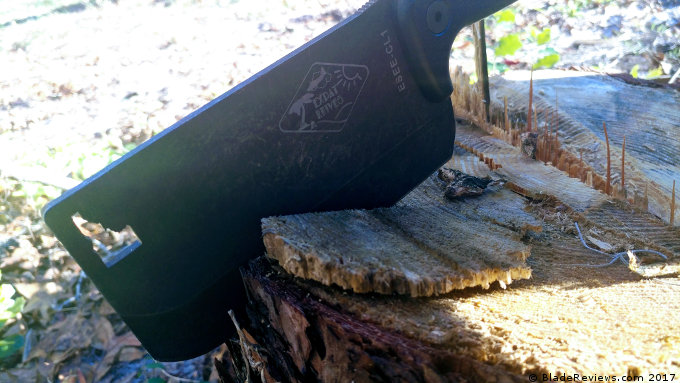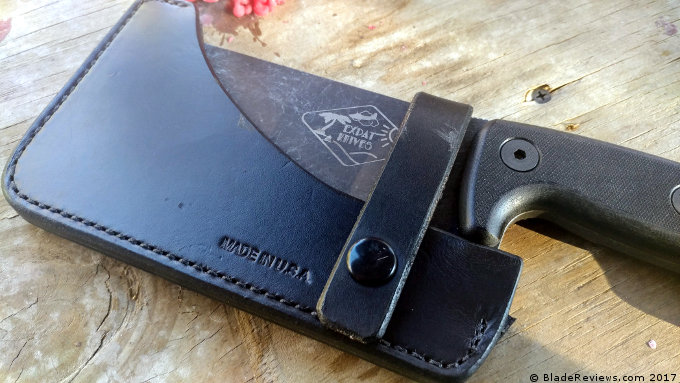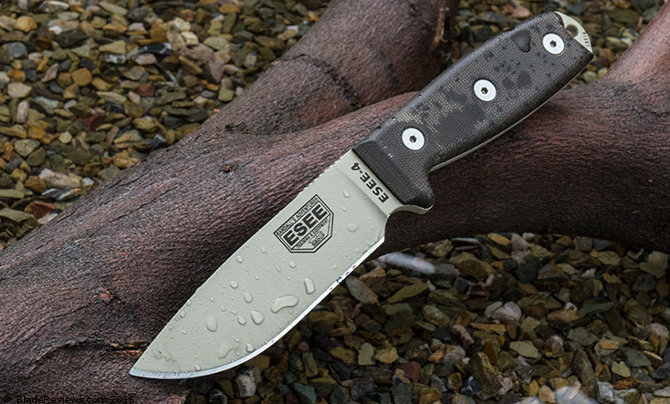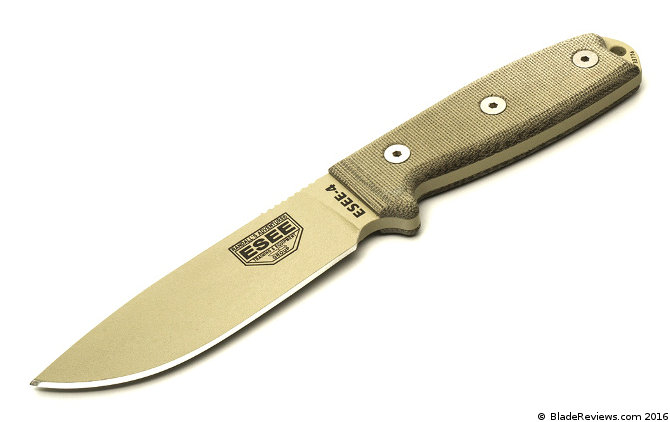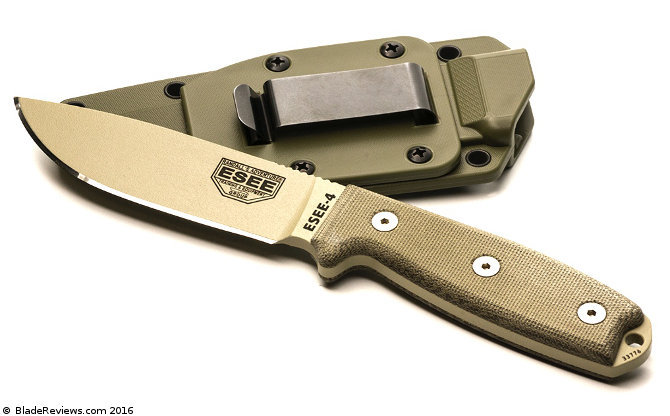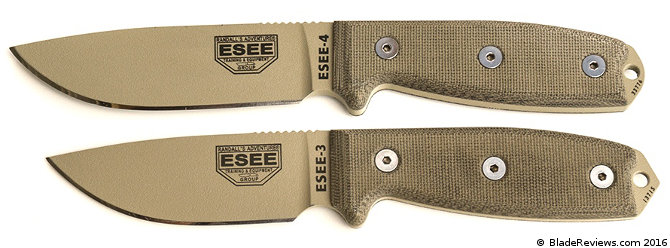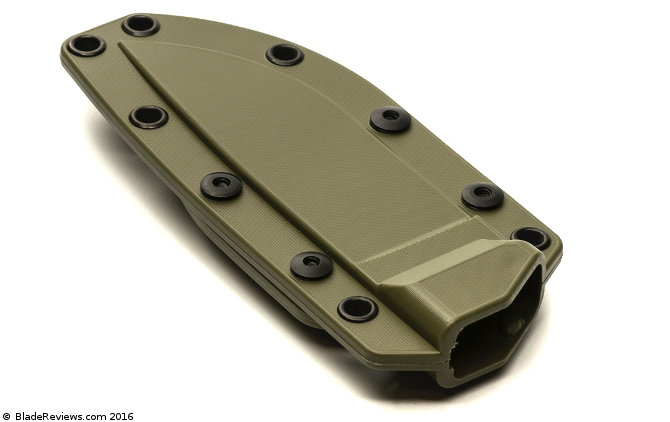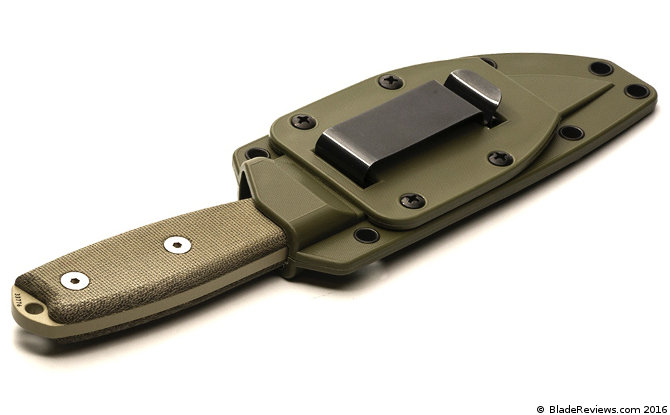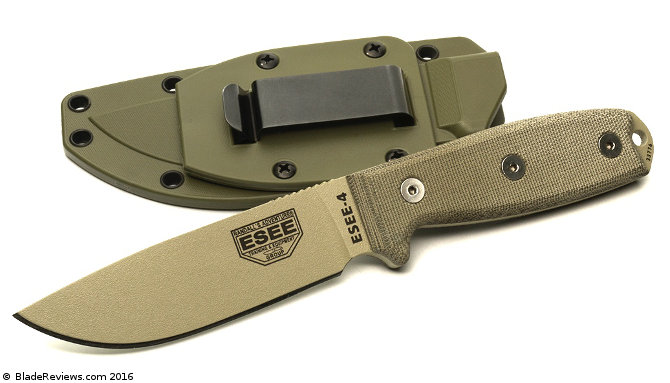It has been a while since I’ve reviewed a large fixed blade. Regular readers know I’m in S.W. Florida. It’s a nice place to live, but it’s not exactly a mecca of bushcraft. I mostly moved here to be by the beach. The land itself is either dry and scrubby, or dank and marshy. It’s a beautiful place to live in it’s own way, but was one of the last places in the USA to be settled for a reason.
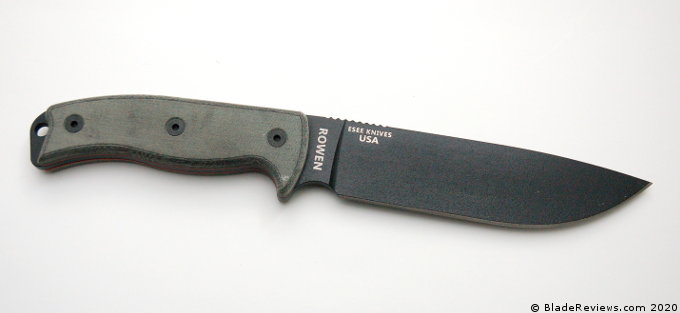
Buy the ESEE-6 at BladeHQ
Buy on Amazon
And while I enjoy trimming trees on our tiny 1/4 acre lot and even having a bonfire a couple times a year, I’m no Ray Mears. Plus, I already have my big bushwacker – the ESEE Junglas. I’ll probably be buried with that knife. Maybe sooner than later depending on how this coronavirus plays out. Regardless, it’s my go to yard tool, and I’ve had it for almost a decade. Why mess with success?
Well, when you run a site like this, people have certain expectations. And they vary somewhat wildly. Since I’ve reviewed some outdoor fixed blades in the past (aka “survival knives“), some visitors may believe that I am duty bound to keep that section updated. And they make a good point.
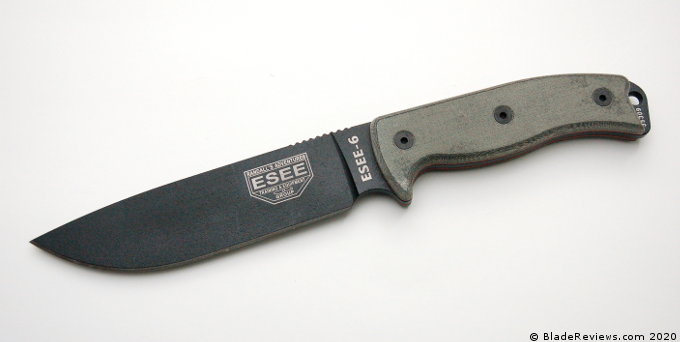
So I want to keep reviewing survival knives. I enjoy them even if I can’t use them as much as I would like. So take the review with a pinch of salt. I don’t proclaim to be a bush master. I’m just a schlemiel with a knife review website and too much time on his hands.
One knife we have been missing from the website for years is the ESEE-6. And frankly, it’s missing from my understanding of the ESEE lineup as well. I’ve reviewed the smaller ESEEs, and the big Junglas, but haven’t touched anything between the 6 and 4. I’ve had Chad write on the ESEE-4, and Josh write on the Laser Strike, but I have to understand these knives as well. So here we go, a long needed review of the ESEE-6.
General Dimensions and Blade Details
The ESEE-6 has an overall length of 11.75″, a 6.5″ blade, and the knife itself weighs 12 ounces. This is a pretty big knife. It’s not a Junglas, which is more of a fortified machete, but it’s still pretty damn big. It could be a good choice if you are looking for something that packs a whallop for chopping tasks, something that can baton pretty big pieces of wood, yet is still reasonably packable, and is also usable as a knife rather than a machete or small sword.
Certainly this would be a good camp knife. It can carve, cut and chop with the best of them. And it’s stout. ESEE knives. are tough, and this ESEE-6 is almost 5mm thick.
Here is a family portrait with my Junglas and ESEE-3 for reference:
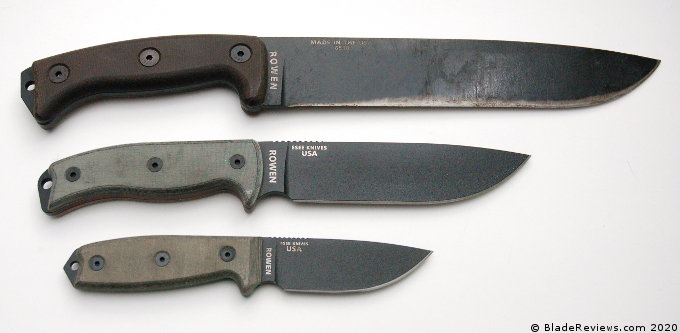
It could also be used in certain martial applications. While it’s not a dagger, I think this 6″ blade has pretty good reach for a hog hunt or in an emergency. So the ESEE-6 strikes me as a large all-round utility / combat knife. The trade off is the size and weight. I wouldn’t take this on the Appalachian Trail, but if I needed something robust for a camp out or day hike, then the ESEE-6 could be a good choice.
Let’s turn to the blade. Here you get 6″+ of powdercoated steel. The shape is ESEE’s classic drop point. It’s a subtle drop point, offering about 3″ of straight edge and a good 3″ of curving belly as well. Lots of room to work with the ESEE-6. The blade is simple. It’s fully flat ground and there are no swedges or anything like that.
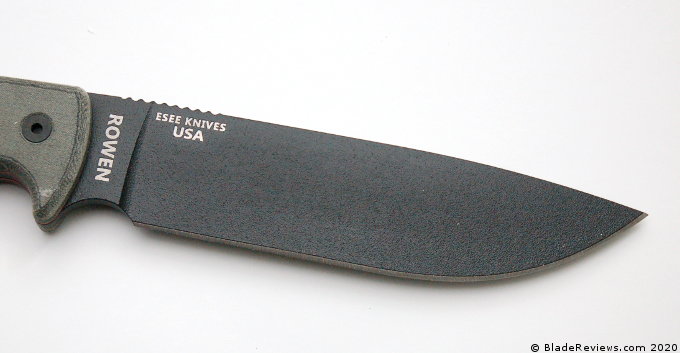
Blade steel is 1095. 1095 is high carbon steel, and is the same steel found on their regular lineup. For those who don’t know, 1095 is not a stainless steel. In exchange for being not-stainless, you get a tough high impact steel that is easy to sharpen. 1095 holds a good edge when used on wood. I find it dulls pretty quickly when used to cut material like cardboard. However, it is very easy to sharpen. That said, you will get good life out of the edge assuming you will be using this knife more for wood and food prep rather than breaking down a pile of boxes.
The entire knife comes with ESEE’s thick powder coat. The offer the coating in various colors, but I prefer the classic look of black powder coat. I took pictures of this knife before I started using it. You can see how the coating looks new, and you can see on my Junglas how the coating will hold up after years of use. It wears pretty well, but it isn’t invincible. It will do a good job of keeping rust off of most of the knife.
Here’s another size comparison. This time I have it next to the Fallkniven A1:
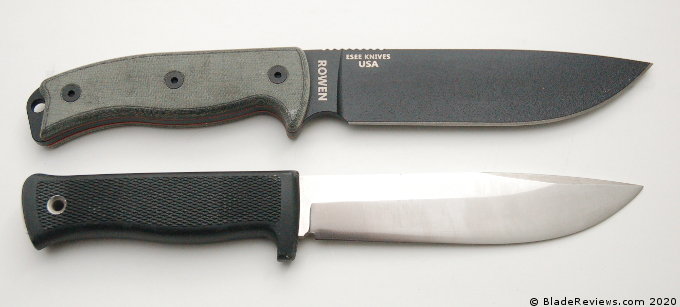
It compares favorably to the A1, friends. That’s why I selected it. Also, both knives are quite thick.
Back to the blade. In practice this is an extremely capable knife. It’s big enough for significant chopping and batoning tasks, but it’s still small enough to use as a knife. Not my first choice for peeling potatoes, but you can certainly chop them up, whittle, etc. The trade off is that the ESEE-6 is significantly heavier than a knife like the ESEE-3. But with the 3 you won’t be chopping, and unless you are a talented woodsman you are going to have a hard time batoning anything significant with the ESEE-3 either.
Handle and Ergonomics
My ESEE-6 came with gray linen micarta handle scales with red liners. It’s a handsome look, and the gray linen micarta is beveled for comfort. ESEE also offers G-10 handles if micarta isn’t your thing, and their extra handle scales are reasonably priced.
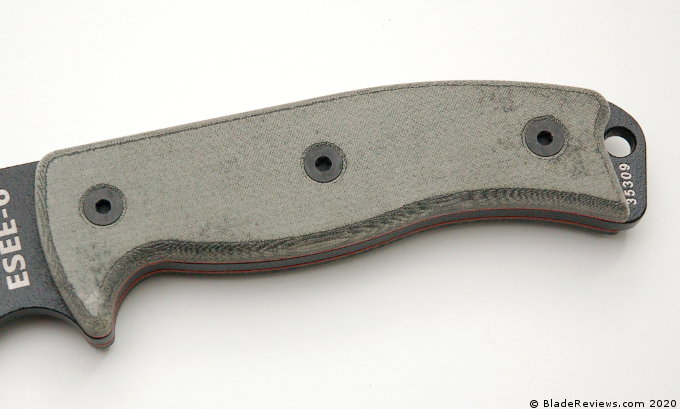
Personally, I like the way micarta wears, and it offers excellent traction even when your hands get wet or sweaty. This is a full tang knife, meaning the blade and handle are one continuous piece of steel, and that tang extends down to the pommel. This provides room for both a lanyard hole and am impact tool. You can crack walnuts or crack skulls depending on what the situation requires. Nice.
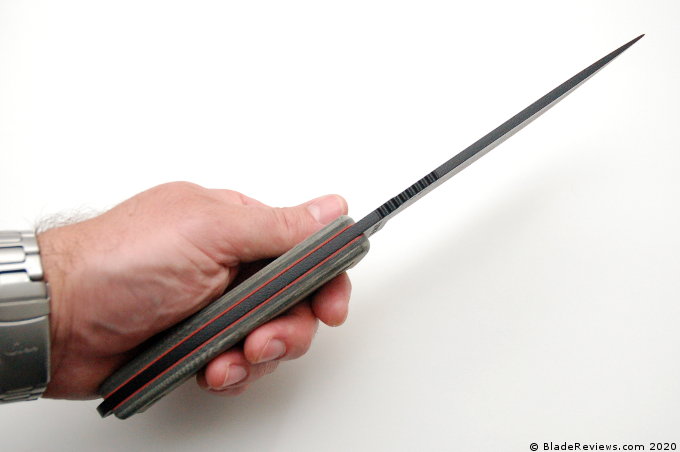
The ESEE-6 comes with a comfortable “Cadillac” of a handle. There is plenty of room, and there is a forward finger choil if you need to choke up on the blade. The micarta handle fills the hand and offers plenty of traction. ESEE included an inch or so of jimping on the spine of the blade. It’s aggressive jimping and is the kind that is better suited for gloved hands. Personally, I find the jimping to be a bit much for a naked hand, but that’s just me.
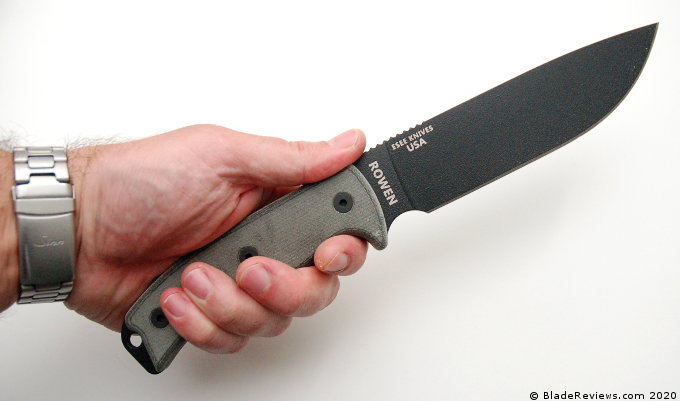
In practice I found this handle to be comfortable for extended use. This whether you use gloves or not. I tend to avoid gloves and did not run into issues with hot spots. The jimping I could live without, especially for crunching cuts, but I understand why ESEE put it there. All in all, it’s a comfortable handle. However, I prefer the edge radiusing (contouring) on the handle of the Junglas over the ESEE-6.
Sheath
The ESEE-6 comes with a high density thermoplastic sheath. It’s riveted and is built similar to a kydex sheath (pancake style). As usual, the quality is there. The sheath is nicely finished and holds the knife securely in place. There is a small amount of rattle, but nothing crazy. It takes a fair amount of force to pop the knife out of the sheath with your thumb, and ESEE included a short run of serrations on the sheath for that purpose. This knife is not coming out accidentally. They also included a drain hole in the bottom of the sheath and plenty of rivets for mounting options.
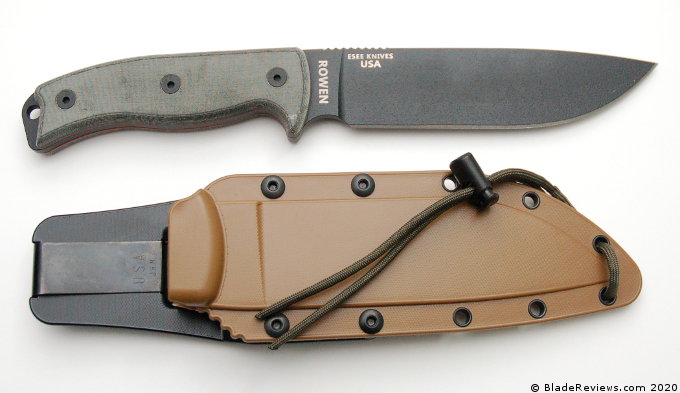
While you can lash this sheath to something or use MOLLE clips, I suspect most people will want to use the included belt clip. It mounts easily and securely to the sheath with the included hardware and allows for amibidextrous up or down carry. All the components of the sheath and belt clip are simple and of high quality. The plastic is dense, the steel clip offers a good blend of ease of use and high spring strength, and everything is set up to provide years of trouble free use.
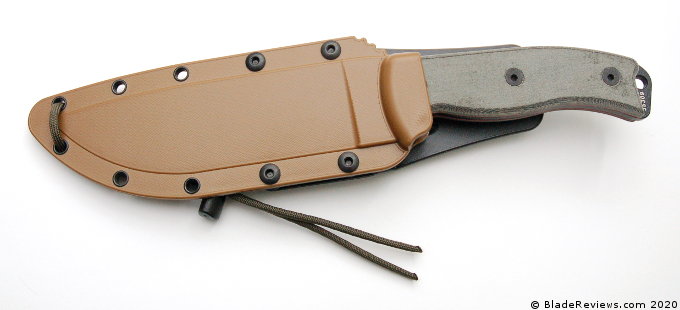
Here is a better shot of that spring clip. The spring clip easily slides over a belt, so you can add or remove the sheath without taking your belt off. Once you have a sheath with a clip like this, it’s hard to go back to your standard sheaths with a belt loop.
ESEE-6 Review – Final Thoughts
Once again ESEE demonstrates their ability to make a high quality fixed blade knife and sheath. Everything is thoughtfully designed, made of high quality materials, and finished neatly. Oh, and it has all been made in the USA and is backed by one of the most comprehensive warranties in the business. They are on the expensive side, but I’ve found when you buy an ESEE fixed blade you are going to get a no-bullshit product that is designed for the long term. My Junglas and ESEE-3 are excellent examples of that, and I’m happy to add this ESEE-6 to the permanent collection. I have no doubt that it will serve me well for years. That said, if something happens I’ll update the review.
Perhaps the hardest part of selecting a knife within the ESEE catalog is settling on a single piece. The ESEE-6 is substantial, so that’s arguably it’s biggest potential problem. If you are looking for a knife to take on extended hikes, then you will likely want to give this one a pass. But if you are looking for something to use on a campsite, or packed into a truck, or even used in the yard, then I think the ESEE-6 has a lot to offer. Also, while I’m fond of my Junglas, it’s not usable as a knife. The ESEE-6 strikes more of a balance between a compact chopper and a utility knife.
Editor: I recommend buying the ESEE-6 at BladeHQ or Amazon. Thank you for reading.
